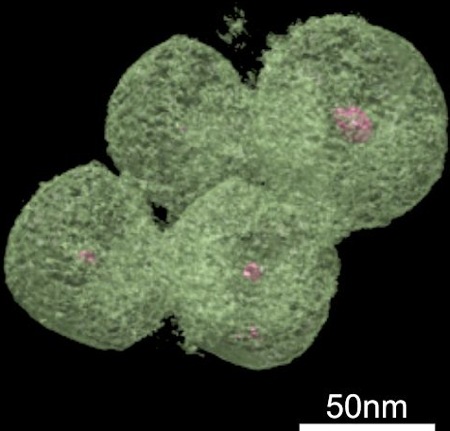Two properties of lanthanides make them ideal for many applications: their fluorescence and their magnetism. Full advantage of these compounds may be taken by combining with organic molecules, called ligands. Example for the fluorescence: the ligand serves as an antenna by capturing energy from photons to transfer to the metal. But, each application requires a specific ligand, whether to vector the molecule, or to prevent leaching of toxic lanthanide ions when used
in vivo, etc...
To avoid these disadvantages, we inserted these complexes in porous silica nanobeads. This was successfully achieved using a process of reverse micelle micro-emulsion. The silica beads produced have identical sizes that can be easily varied in a controlled manner. The complexes, present either in the center or in periphery of the bead, according to their more or less hydrophilic character, have their intrinsic properties preserved or enhanced (up to a factor of 2 for the fluorescence lifetime). Completely biocompatible, these beads also prevent leaching of metals in the environment. As their surface can easily be made functional, we obtain a multimodal application platform: imaging (MRI or fluorescence), organic light emitting diodes, anti-counterfeiting...

Location of lanthanide complexes (pink) in the center of the silica nanoparticle